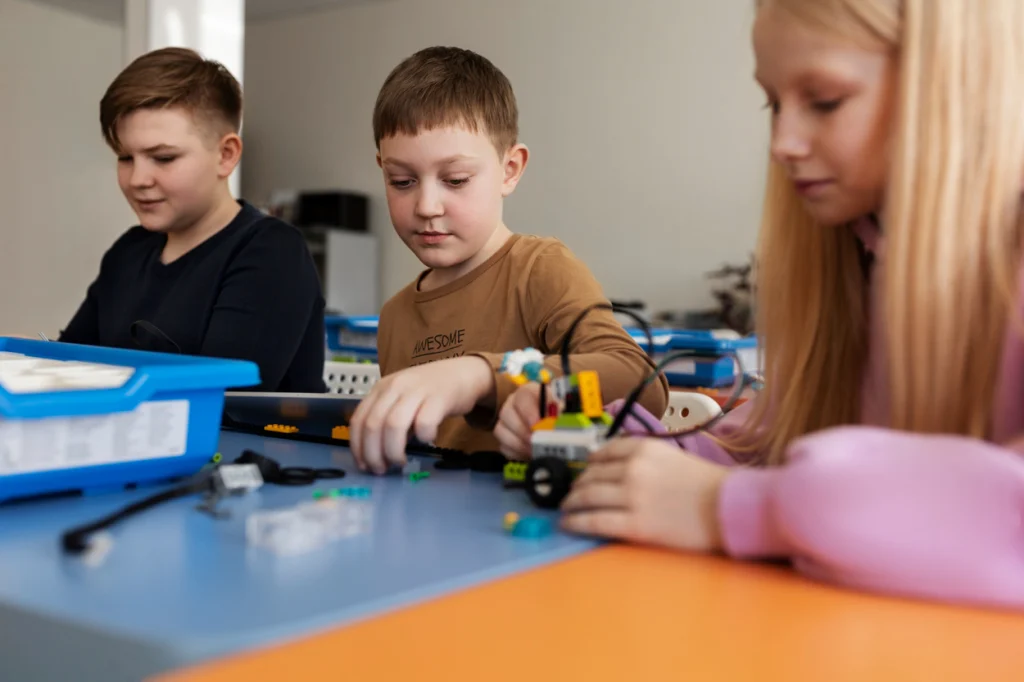Introduction
A lot of the time, the usual stuff, charts, checklists, reward systems, just doesn’t cut it for kids with autism or other special needs. What works for one kid may totally backfire for another. Some need help sticking on routines, some struggle with changes, some just need a way to say how they’re feeling. And honestly, no one tool fixes it all.
That’s kind of where Assistive Technology for Autism & Special Needs App comes in. Not to take over or replace what parents and teachers do, but more like something in the background that helps hold things together when it starts to get hard.
What Do We Mean by Assistive Technology?
Basically, it’s any tool that helps a person with a disability do something more independently. That could be a communication board with pictures, a sensory-friendly headphone, or yes, even an app on a phone.
For someone with autism, assistive tech might help with things like:
- understanding schedules
- expressing emotions
- staying calm when the world feels “too much”
- or just knowing what’s going to happen next
And no, it do not have to be complicated or expensive. Sometimes, the simplest app make the biggest difference.
How Mobile-Based Tools Are Changing the Game
There was a time when assistive tech meant carrying around big devices or relying on custom tools that didn’t always feel… practical. But now? Most of it fits in your pocket.
Smartphones and tablets have opened the door to a new kind of support. And it’s not just about convenience, it’s also about dignity. When a child uses an Assistive Technology for Autism & Special Needs App on a phone or tablet like everyone else, it feels normal. They’re not standing out. They’re just… part of things.
Plus, it helps everyone, Parents and teachers stay connected. they can all be on the same page. Literally.
Why It Matters for Kids With Autism and Special Needs
Every child’s different, any parent or teacher will tell you that. But when it comes to kids with autism or learning differences, there are some common struggles that come up a lot. And this is where the right kind of support can make a real difference.
Take routines, for example. When kids can see what’s coming, like a list of steps with icons, tasks get way less stressful. They don’t have to guess or be surprised. It’s right there, and that predictability really helps.
Parents also get to notice if a certain day of the week tends to be harder, or if loud environments trigger more stress.
And what’s great is, all of this can be shared with teachers or caregivers easily. So you’re not repeating everything in texts or forgetting details in the moment, everyone stays in the loop.
Over time, kids start learning things up on their own. They build habits, learn what works for them, and grow up more confident doing things independently.
It’s not perfect. Nothing is. But it lightens the load, for the adults and the kids.
From Real People, Real Results
One mom shared that her son would scream every morning when it was time to get dressed. Nothing worked, until they used an app that showed his morning routine in pictures. After two weeks, he was reminding her what came next.
Another family used a mood tracker built into an app. It helped them realize their daughter was more anxious on days with loud noises outside. They added noise-canceling headphones and noticed a huge difference.
It’s not about technology replacing care. It’s about helping care work better.
TinyBit: Built for Real Life, Not Just Screens
Some apps just look good, but don’t help much when real life gets unpredictable. TinyBit isn’t one of them. It’s been built with real families in mind, using tools that actually matter day-to-day:
- Visual routines: create step-by-step schedules with icons, so kids know what’s next without confusion.
- Live mood notifications: a simple mood selector on the homepage helps you understand how your child’s doing, and catch feelings early.
- Reminders: app reminds everyone when it’s time for a task or activity, no one forgets, and it doesn’t require nagging.
- Location tracking: see where your child is, in real time, great for peace of mind.
- Weather updates: know if it’s going to rain and what to wear, perfect for outdoor plans.
- Language translation: breaks down language barrier so everyone, parents, teachers & therapists can communicate clearly.
These are features families said they’d been waiting for, tools that fit into everyday routines, support emotional well‑being, and keep everyone connected.
TinyBit doesn’t pile on gadgets. It gives you what you actually need, in a way that works with your life, not against it.
Final Thoughts
The idea of Assistive Technology for Autism & Special Needs App sound technical at first, but at its heart, it’s really about something simple: helping kids feel more supported in a world that doesn’t always fit their needs.
What used to need a whole team or special tools can now fit into a single app, something you already have in your pocket. That kind of support wasn’t this easy to access even a few years ago. Now, families can use it anytime, at home, during a school day, or even on the go.
The point of all this tech isn’t to take over what parents or teachers do. It’s more like… giving kids and caregivers a little extra help when things start to get tough.
Technology keeps changing, sure. But the reason behind it stays pretty simple: helping kids feel more understood, more supported, and more in control of their world, in whatever way works for them.




